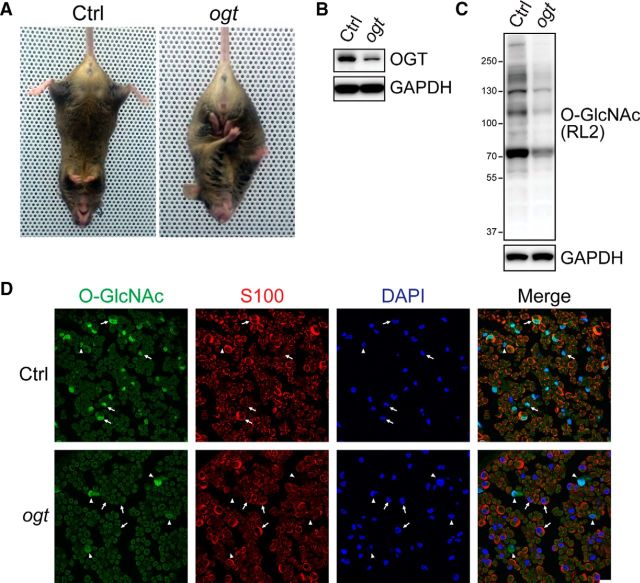Figure 1.
OGT-SCKO mice have deficits in O-GlcNAcylation and glucose metabolism. A, OGT-SCKO mice at 8 months of age show hindlimb clasping, a common sign of peripheral neuropathy in mice. B, C, Western blot analysis of OGT expression (B) and O-GlcNAcylation (C) in sciatic nerves from 1-month-old control and OGT-SCKO mice. D, Representative confocal microscopic images of sciatic nerves from 1-month-old OGT-SCKO and control mice stained for O-GlcNAc (green), S100 (red), and DAPI (blue). Intense nuclear O-GlcNAc immunoreactivity is detectable in S100-positive SCs (arrows) and non-SCs (arrowheads) in the control nerve (Ctrl), whereas O-GlcNAc staining is absent in S100-positive SCs in the OGT-SCKO nerve (ogt). Note O-GlcNAc staining in non-SCs in the mutant nerve (arrowheads). Scale bar, 10 μm.

